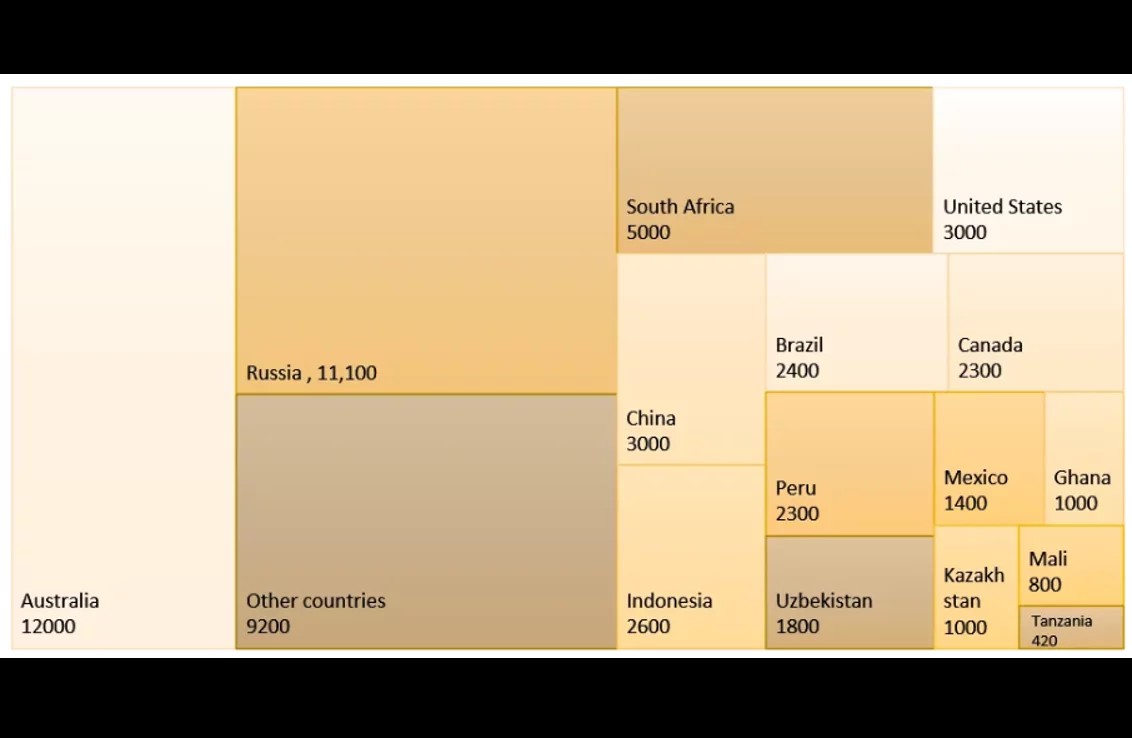The article critically evaluates recent political claims that El Salvador holds gold reserves worth USD 3 trillion and examines proposed alternatives to cyanide (thiosulfate, gravity methods, bioleaching) for gold extraction. It argues that reserve claims are implausible in light of global datasets and that, despite toxicity concerns, cyanide remains the only widely viable lixiviant for modern industrial-scale gold production.
Global Context vs. National Claims
Using U.S. Geological Survey and World Gold Council figures, the author notes that total global gold reserves are valued at under USD 5 trillion. Therefore, attributing USD 3 trillion (≈60% of the world’s total) to El Salvador—whose land area is ~0.014% of Earth’s continental surface—is inconsistent with available data. Historic national output was small (e.g., tens to low hundreds of kilograms in the late 1990s), further weakening assertions about an exceptionally high deposit density.
Current Estimated Gold Reserves in the world

Cyanide’s Role in Modern Gold Extraction
Since its adoption in 1889, cyanide leaching has enabled profitable recovery from low-grade ores (often <1 g/t). Today, cyanidation is applied to nearly all industrial gold extraction at some stage due to its effectiveness, selectivity, recyclability in circuit, and established downstream recovery (carbon adsorption/elution or Merrill–Crowe zinc cementation). Nonetheless, cyanide’s acute toxicity demands strict management to mitigate risks to wildlife, water, and communities.
Assessment of Proposed Alternatives
- Thiosulfate: Less toxic but operationally complex and typically costlier due to high reagent consumption and challenging recovery. The benchmark case (Barrick Goldstrike, Nevada) applies thiosulfate only to “double-refractory” ore where cyanide is unworkable; this is an exception driven by ore mineralogy, not a general substitute.
- Gravity Methods: Effective mainly for free gold in unconsolidated placer settings; not a standalone solution for hard-rock ores. In modern operations, gravity serves only as a pre-concentration step before chemical extraction.
- Bioleaching (Bio-oxidation): A pre-treatment that oxidizes sulfides to liberate encapsulated gold; cyanide leaching still follows. Its current global contribution is limited and it does not replace cyanide.
Conclusions Specific to El Salvador
- The USD 3 trillion reserve figure is not supported by international datasets or the country’s production history; claims require independent, transparent geological studies before policy action.
- While environmentally hazardous if mismanaged, cyanide remains the only broadly viable industrial lixiviant; alternatives face cost, efficiency, or scope limitations and cannot presently replace cyanide at scale.
- Given the 2024–2025 policy shift lifting the metallic mining ban, decisions should rest on rigorous technical evidence and robust regulation to balance economic potential against environmental and social risks.
Note: This page summarizes the original article without adding or removing subjects beyond the author’s scope. For detailed figures, tables, and citations, refer to the source document.
